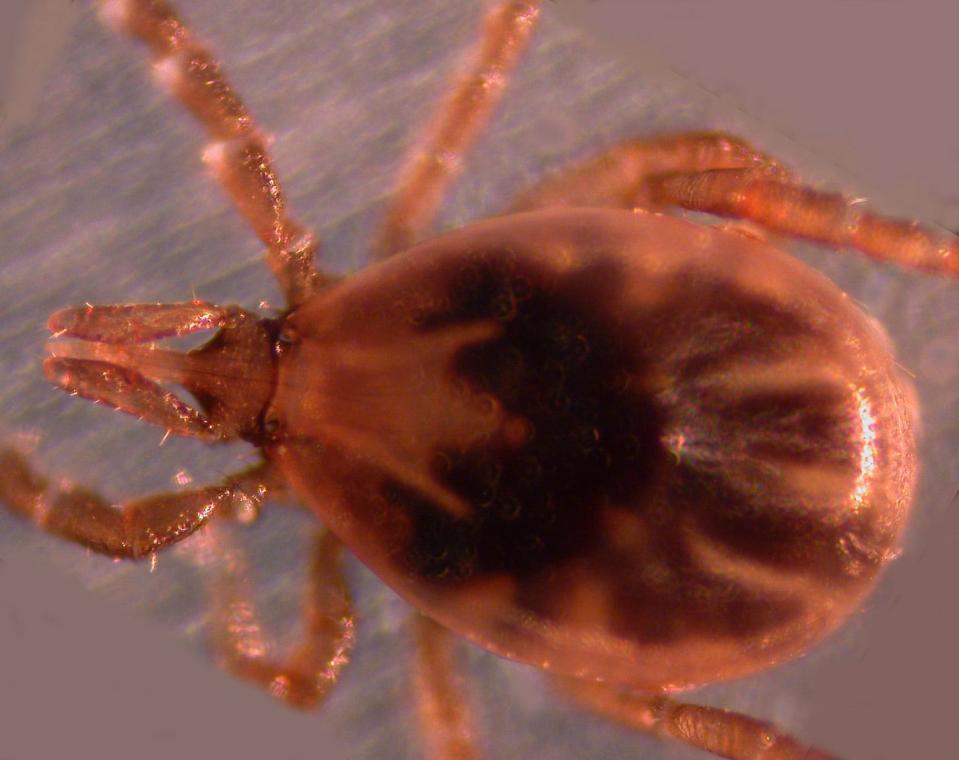Disease infected ticks are looking to bite. How people can stay safe
Tis the season of the ticks — and a time for residents to cover up and take precautions.
A bite from a tiny tick can cause Lyme and other diseases, such as Ehrlichiosis, Babesiosis, Anaplasmosis, and Powassan. The risk of encountering an infected tick in Rockland and the rest of the Hudson Valley region is high, Rockland Health Department says.
The warmer weather brings out the ticks.

“Ticks, like many of us, become more active during warmer weather," said Dr. Chitra Punjabi, the Health Department director of TB & Communicable Disease Control. "Ticks that carry Lyme disease continue to be found in Rockland."
Punjabi advised residents to take the following precautions to stem the chances of being bitten:
Avoid contact with ticks: Stay on cleared, well-traveled trails, walk in the center of trails, avoid dense woods and bushy areas, and avoid sitting directly on the ground or stone walls.
Check clothes and any exposed skin frequently for ticks while outdoors.
Brush off any ticks before they attach: Do a complete check of your skin when you go back inside. Be sure to check for ticks on your children and pets. It is easy to check when you bathe or shower, preferably within two hours of being outside. Do a final, full-body tick check at the end of the day.
Removing ticks: Using fine-tipped tweezers, grasp the tick near the mouthparts as close to the skin as possible. Do not twist, turn, or squeeze the tick's body. Instead, pull the tick in a steady, upward motion away from the skin until the tick lets go. To lessen your chance of infection, remove an attached tick as soon as possible.
Wear light-colored clothing to spot ticks: Wear a long-sleeved shirt, long pants, socks, and shoes. Tuck your shirt into your pants and pant legs into your socks. Wear sneakers or boots, not sandals. Tie back long hair or wear a hat.
Consider using insect repellent: Carefully read and follow the directions on the repellent label.
People who develop a rash or flu-like symptoms after a tick bite should contact their healthcare provider, the Health Department says.
The U.S. Centers for Disease Control provides an overview of the dangers ticks present.
The state Health Department makes available state records on communicable diseases, including Lyme and other tick-causing diseases.
Steve Lieberman covers government, breaking news, courts, police, and investigations. Reach him at slieberm@lohud.com Twitter: @lohudlegal
Read more articles and bio. Our local coverage is only possible with support from our readers.
This article originally appeared on Rockland/Westchester Journal News: In NY, watch for ticks and take precautions

